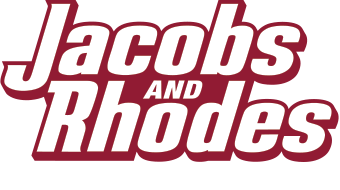Energy-Saving Tips: How to Reduce HVAC Costs and Conserve Resources
 Energy conservation and cost reduction are a hot topic for both environmental sustainability and financial well-being.
Energy conservation and cost reduction are a hot topic for both environmental sustainability and financial well-being.
These topics we’re going to cover have a specific focus on HVAC systems and how you can reduce expenses and conserve energy.
From the installation of programmable thermostats and regular maintenance practices to smart HVAC technology and energy-efficient upgrades, we’ll cover a range of actionable tips and strategies to help you make a positive impact on the environment and your budget.
Tip #1: Programmable Thermostats
Programmable thermostats are revolutionizing home comfort and efficiency, providing homeowners with unparalleled control over heating and cooling systems.
Operating on the premise of automating temperature adjustments according to daily schedules, these devices enable personalized temperature settings, striking a perfect balance between comfort and energy savings. The manifold benefits include substantial contributions to energy efficiency, reducing both carbon footprint and energy bills. The pre-set schedules eliminate the discomfort of returning to a home that is too hot or too cold, enhancing overall well-being.
To fully leverage the potential of programmable thermostats, savvy strategies are essential. Set a baseline temperature for when you’re at home, adjusting it seasonally for optimal energy savings.
During periods of absence, program the thermostat to minimize energy usage by decreasing the temperature in winter or increasing it in summer. Regularly reviewing and updating the thermostat schedule ensures ongoing alignment with lifestyle changes, transforming these devices into invaluable allies for creating a welcoming and energy-efficient home.
Tip #2: Regular Maintenance
Maintaining your HVAC system is crucial for a comfortable and energy-efficient home. Regular maintenance ensures that your system operates at its best, preventing breakdowns and extending its lifespan.
Simple do-it-yourself (DIY) tasks, such as regularly changing air filters and cleaning vents, play a key role in keeping your HVAC system running smoothly.
These tasks are manageable for most homeowners and can significantly improve system efficiency, reducing energy consumption and lowering utility bills.
While DIY maintenance is essential, there are times when hiring a professional becomes necessary.
A professional HVAC technician should be called in for more complex tasks like inspecting and repairing ductwork, checking refrigerant levels, and conducting a comprehensive system tune-up. Regular professional maintenance not only addresses potential issues before they become major problems but also ensures that your HVAC system operates optimally, providing a comfortable and healthy indoor environment for your home.
By combining DIY tasks with professional expertise, you can keep your HVAC system in top shape, ensuring reliable performance throughout the seasons.
Tip #3: Air Filter Replacement
Air filters are unsung heroes in the world of HVAC systems, playing a pivotal role in maintaining efficiency and indoor air quality.
These filters act as the first line of defense, trapping dust, debris, and allergens, preventing them from circulating throughout your home. A clean and efficient air filter ensures that your HVAC system operates smoothly, preventing unnecessary strain on the system and maximizing energy efficiency. Regularly replacing air filters is a simple yet vital task that every homeowner should prioritize to keep their HVAC system functioning optimally.
The frequency of air filter replacement depends on various factors such as the type of filter, the level of household dust, and whether there are pets in the home. As a general rule, it’s recommended to replace standard 1-3 inch filters every 1-3 months. For thicker filters or those with higher MERV ratings, replacement intervals may vary.
Choosing the right air filter for your system is equally important. Factors to consider include the filter size, MERV rating, and the specific needs of your household, such as allergies or pet dander. Taking the time to select and replace air filters regularly is a small but impactful step in maintaining a healthy and efficient HVAC system.
Tip #4: Sealing Leaks and Insulating
Detecting and addressing air leakage is a crucial aspect of optimizing your home’s energy efficiency. Common areas of air leakage include windows, doors, and gaps in walls or around electrical outlets. Identifying these weak points allows you to take proactive measures, preventing conditioned air from escaping and unconditioned air from infiltrating your living spaces.
Proper insulation is a key player in maintaining a comfortable and energy-efficient home, acting as a barrier against heat transfer. Insulating your home effectively not only keeps indoor temperatures stable but also reduces the workload on your heating and cooling systems, leading to lower energy bills.
For those keen on a do-it-yourself approach, there are various sealing and insulation techniques to improve your home’s energy performance. Weatherstripping windows and doors, applying caulk to seal gaps and cracks, and adding insulation to attics and crawl spaces are effective ways to enhance your home’s insulation.
Taking the time to identify and address areas of air leakage, coupled with proper insulation, is a proactive and cost-effective strategy for homeowners looking to improve the energy efficiency of their homes.
Tip #5: Energy-Efficient HVAC Upgrades
Embracing energy-efficient HVAC systems is a proactive step toward a more sustainable and cost-effective home climate control. Modern HVAC systems, equipped with advanced technologies such as variable-speed motors and smart thermostats, offer improved efficiency compared to traditional models.
Upgrading to these systems not only reduces energy consumption but also enhances comfort by providing more precise temperature control and better air quality. By optimizing performance and minimizing waste, energy-efficient HVAC systems play a pivotal role in reducing both environmental impact and utility bills.
Tip #6: Smart HVAC Technology
Smart HVAC technology is revolutionizing the way we control and optimize home climate systems. At the forefront of this innovation are smart thermostats, which offer an array of features to enhance energy efficiency and user convenience. These intelligent devices can learn your preferences over time, creating tailored schedules that optimize heating and cooling based on your routine.
Remote access through smartphone apps allows for real-time adjustments, ensuring your home is always at the desired temperature, even when you’re away. Beyond convenience, the energy-saving benefits of smart thermostats are significant, as they adapt dynamically to changes in occupancy and weather conditions, ultimately reducing utility bills and environmental impact.
Integrating smart technology into your HVAC system is a straightforward process that brings substantial benefits. Start by selecting a compatible smart thermostat and ensuring your HVAC system is in good working order.
Installation typically involves connecting the thermostat to your existing system and configuring settings through a user-friendly app. Once installed, you can enjoy features like geofencing, which adjusts temperatures based on your proximity to home, and smart home integrations that allow seamless coordination with other connected devices. The intuitive nature of these systems not only improves energy efficiency but also empowers homeowners to have greater control over their indoor climate.
Tip #7: Energy Consumption Tracking
Monitoring and tracking energy consumption is an important step towards achieving a more sustainable and efficient home. Various tools and methods are available to empower homeowners in this pursuit.
Smart meters, energy monitoring apps, and home energy management systems provide real-time insights into how much energy is being used and when. Armed with this data, homeowners can make informed decisions about their energy usage and identify areas for improvement.
Data plays a pivotal role in uncovering opportunities for energy savings. By analyzing patterns and trends in energy consumption, homeowners can pinpoint inefficiencies and implement targeted solutions.
Whether it’s identifying energy-hungry appliances, detecting drafts, or recognizing peak usage times, the data-driven approach provides a roadmap for optimizing energy efficiency. Armed with a clear understanding of consumption patterns, homeowners can create a personalized energy-saving plan. This plan might include simple adjustments like upgrading to energy-efficient appliances, implementing better insulation, or establishing more conscious energy-use habits. By harnessing the power of data, homeowners can take meaningful steps towards reducing their carbon footprint and enjoying the long-term benefits of a more sustainable home.
Tip #8: Behavior and Habits
The daily habits we cultivate at home wield a significant influence over our HVAC energy usage. Simple adjustments in behavior can lead to substantial energy savings and contribute to a more sustainable lifestyle.
One effective tip is to be mindful of thermostat settings. Consistently adjusting the thermostat by a degree or two, especially when leaving the house, can result in notable energy conservation.
Additionally, cultivating the habit of closing doors and windows when the heating or cooling system is in use helps maintain the desired temperature efficiently, preventing unnecessary energy loss.
Creating a more energy-conscious household involves everyone in the effort to reduce environmental impact and cut down on utility bills. It’s essential to communicate the importance of energy conservation to your family or household members.
Encourage small but impactful habits, such as turning off lights and electronics when not in use, using energy-efficient appliances, and being mindful of water usage. Involving everyone in these efforts fosters a sense of collective responsibility and reinforces the idea that sustainability is a shared goal.
By making energy-conscious behavior a part of your daily routine and involving your household in these efforts, you contribute to a greener, more cost-effective home environment.
Tip #9: Seasonal Strategies
As the seasons change, optimizing your HVAC system for efficiency becomes crucial. In the summer, consider adjusting your thermostat to a higher temperature when you’re away, utilizing ceiling fans to circulate air and lessen the workload on your cooling system.
Regularly cleaning or replacing air filters is also essential for maintaining peak efficiency during warmer months. Conversely, in winter, setting your thermostat a bit lower when you’re not at home, sealing drafts around windows and doors, and ensuring adequate insulation contribute to energy efficiency and warmth.
Conducting a seasonal HVAC check, including inspecting ductwork, lubricating moving parts, and clearing debris from outdoor units, ensures that your system operates optimally when you need it most.
Extreme weather conditions can put a strain on your HVAC system, but with strategic management, you can navigate these challenges efficiently. During scorching summer days or frigid winter nights, consider installing a programmable thermostat to regulate indoor temperatures without excessive energy consumption.
In extreme heat, closing curtains or blinds during the day can help block out sunlight and reduce the cooling load. In severe cold, using space heaters judiciously in specific areas can supplement your heating system. By proactively preparing your HVAC system for seasonal changes and implementing thoughtful strategies during extreme weather, you not only enhance efficiency but also ensure your home remains a comfortable haven throughout the year.
Conclusion
Energy conservation and cost reduction is an impactful endeavor that intertwines both environmental sustainability and financial well-being.
Various HVAC tips and strategies, from programmable thermostats to smart technology, DIY maintenance, and seasonal considerations, even if they are small changes, can yield significant results.
The overarching theme is empowerment — empowering homeowners to take control of their energy usage, make informed decisions, and foster a more sustainable and comfortable living environment.
Each tip discussed here serves as a practical and actionable step toward a greener, more energy-efficient home.
Whether it’s the installation of energy-efficient HVAC systems, regular maintenance practices, or the adoption of smart technologies, these measures collectively contribute to reducing our carbon footprint and, concurrently, lowering utility bills.
As we embrace these tips, it’s essential to recognize the broader impact of our actions, not only on our immediate surroundings but also on the planet we all call home.
By integrating these strategies into our daily lives, we forge a path toward a more sustainable future, where environmental stewardship and financial prudence coexist harmoniously.
Contents
- 1 Tip #1: Programmable Thermostats
- 2 Tip #2: Regular Maintenance
- 3 Tip #3: Air Filter Replacement
- 4 Tip #4: Sealing Leaks and Insulating
- 5 Tip #5: Energy-Efficient HVAC Upgrades
- 6 Tip #6: Smart HVAC Technology
- 7 Tip #7: Energy Consumption Tracking
- 8 Tip #8: Behavior and Habits
- 9 Tip #9: Seasonal Strategies
- 10 Conclusion

 Jacobs and Rhodes
Jacobs and Rhodes Jacobs and Rhodes
Jacobs and Rhodes